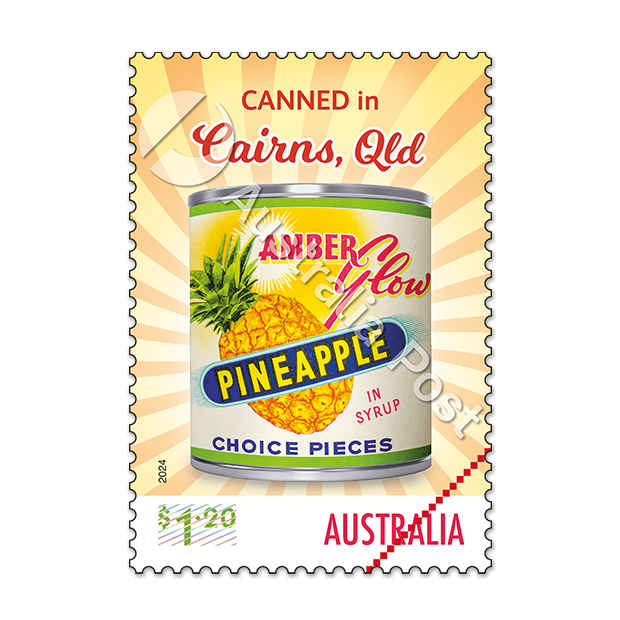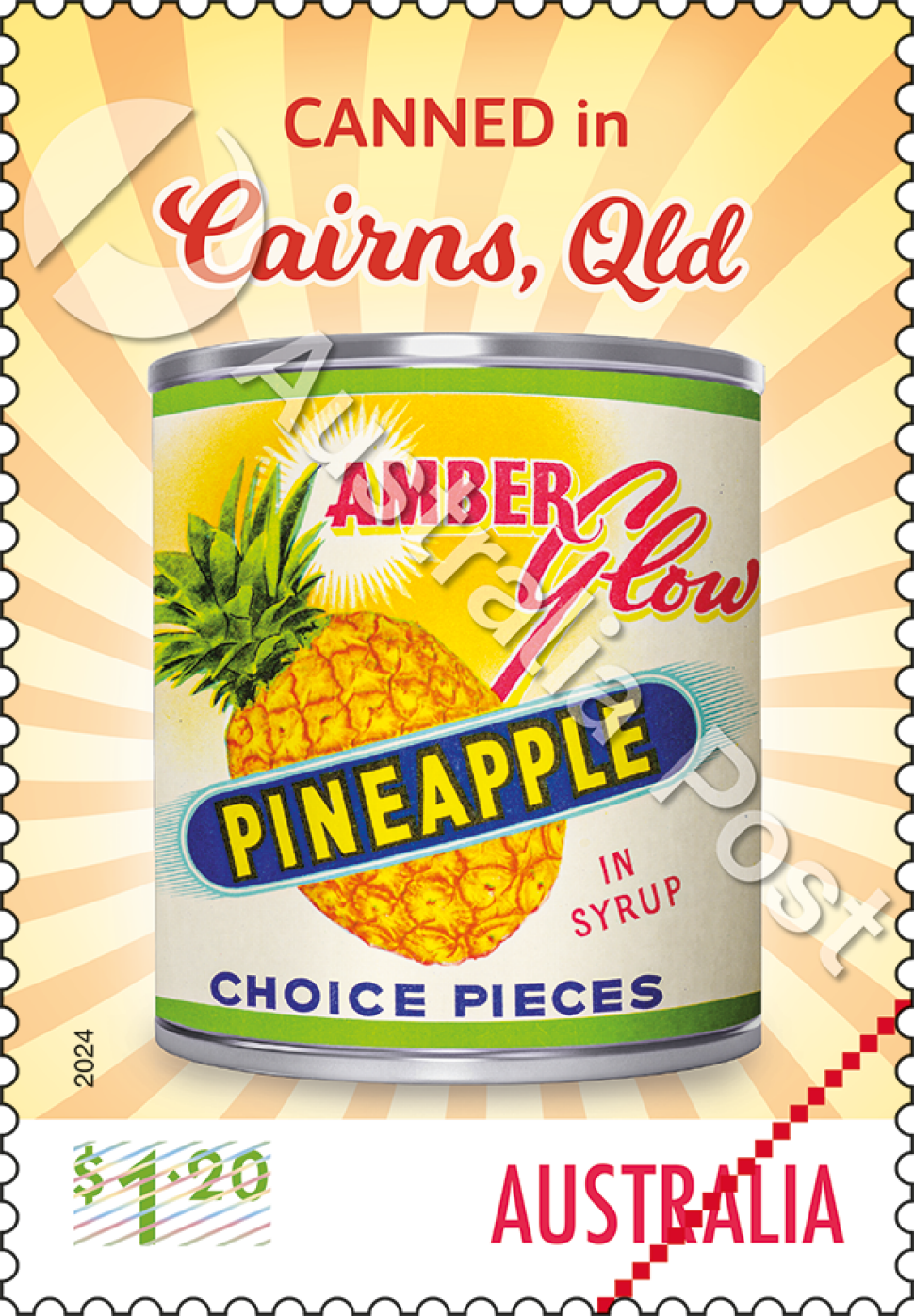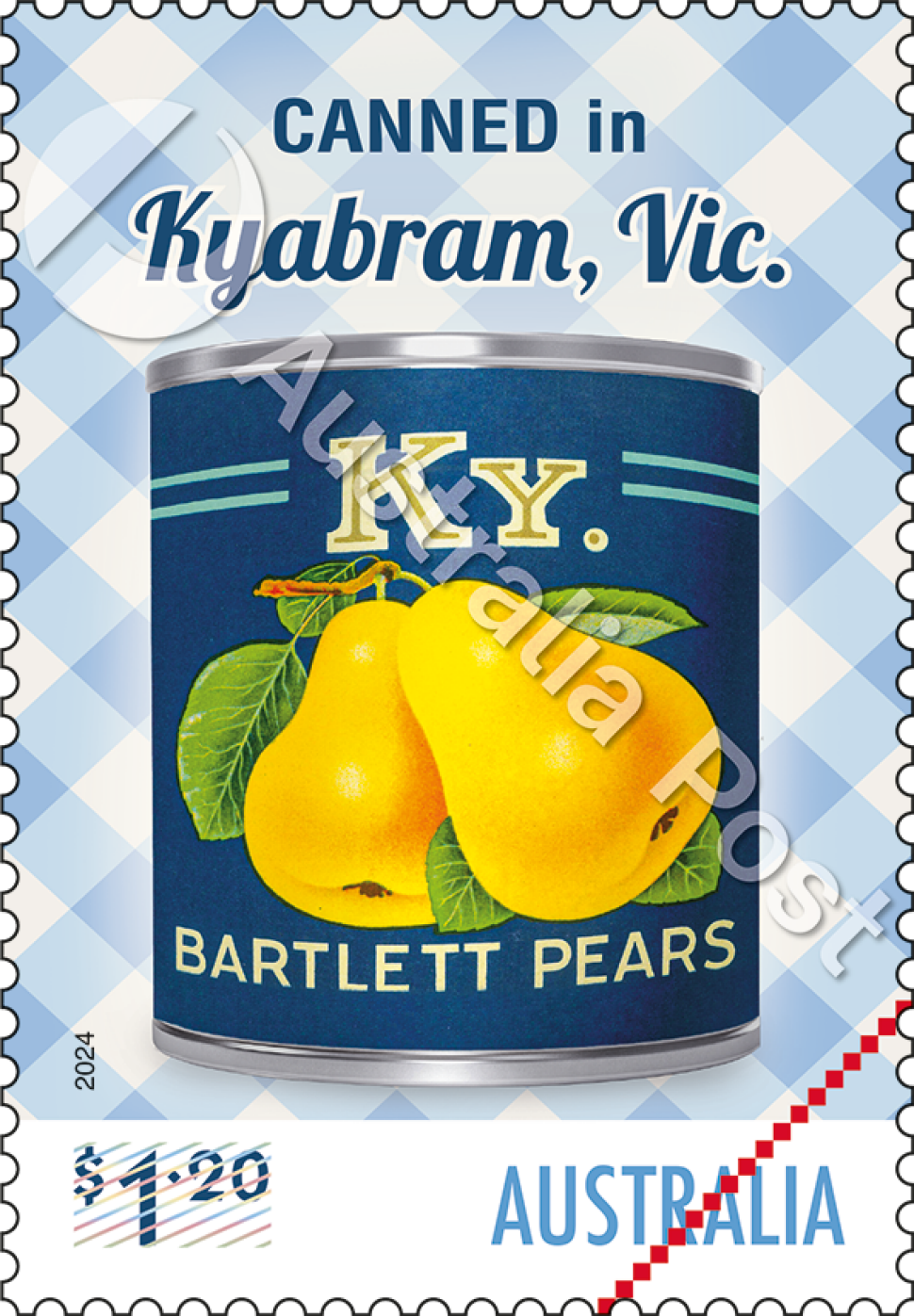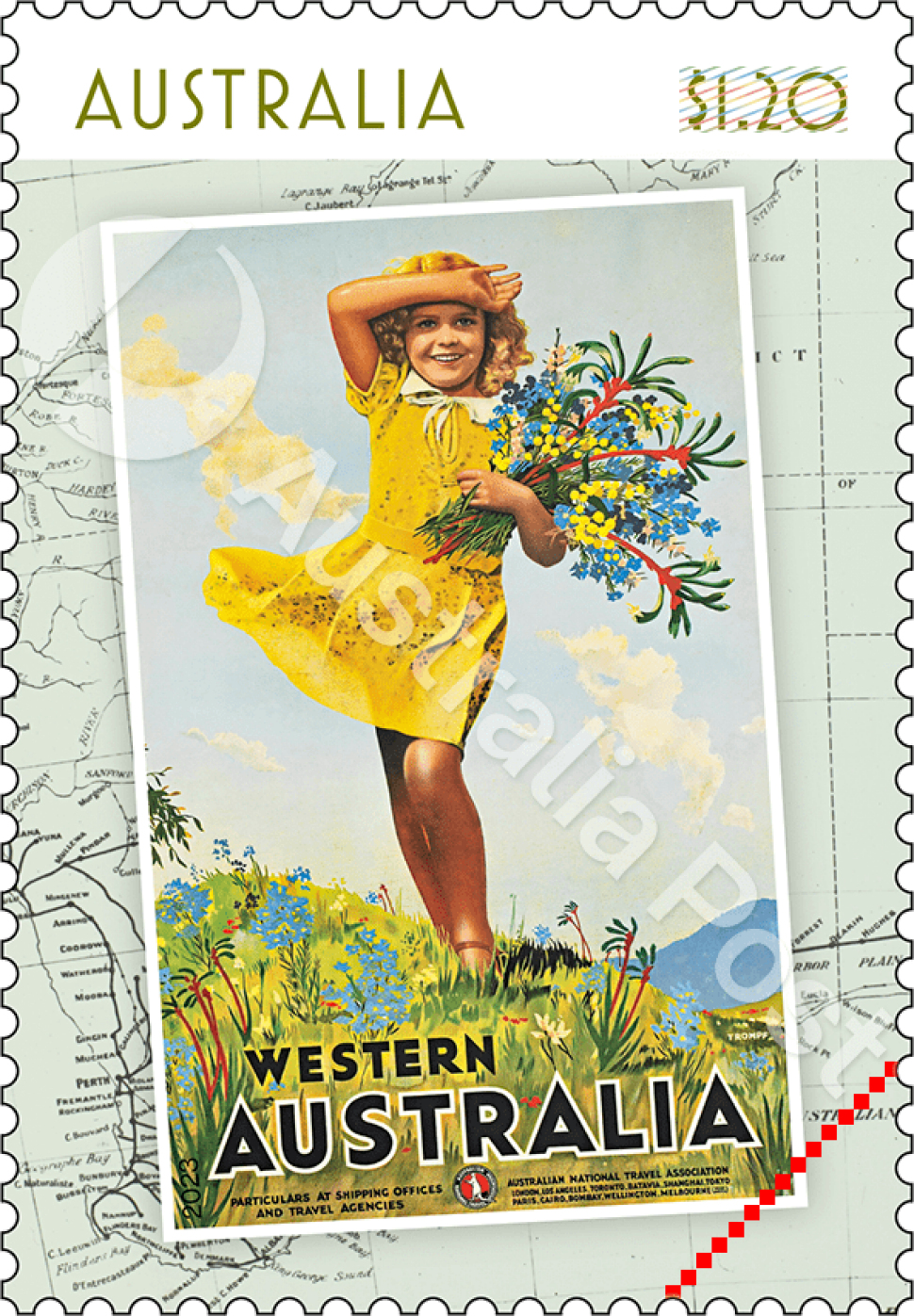Overview
Between the late 1920s and the late 1940s, primary production consistently amounted to around 20 per cent of Australia’s gross domestic product (GDP). With output far exceeding the needs of Australia’s own population, Australia became one of the world’s major food exporters.
In 1924, a government primary production bonus scheme (which had begun in 1907) was expanded to include payments for the production and export of canned apricots, peaches, pears and pineapples. A government-funded bounty was paid to each manufacturer based on the quantity of produce that was processed. Export control boards were established to maintain minimum standards and regulate overseas marketing (in 1926, this included the Canned Fruit Export Control Board).
After World War II, Britain continued to guarantee a market for Australian canned produce. The Department of Commerce and Agriculture, in Perth, had a Chief Fruit Inspector, who ensured that fruit tin labels met Australian food description standards and those of their destination. The inspector was also keen to ensure that overseas consumers knew where their fruit was coming from, so labels were checked for accuracy of information.
Today fruit tin labelling provides an insight into past culinary habits and tastes.
Technical specifications
- Issue date
- 22 January 2024
- Issue withdrawal date
- 1 August 2024
- Denomination
- $1.20 x 3
- Stamp & product design
- Sharon Rodziewicz, Australia Post Design Studio
- Paper: gummed
- Tullis Russell 104gsm Red Phosphor
- Paper: self-adhesive
- Tullis Russell Red Phos PSA (P55) 100gsm Rel. S/A
- Printer
- RA Printing
- Printing process
- Offset lithography
- Stamp size (mm)
- 26 x 37.5
- Minisheet (mm)
- 135 x 80
- Perforations
- 14.6 x 13.86
- Sheet layout
- Module of 50 (2 x 25 no design)
- FDI Postmark
- Kyabram, VIC 3620
- FDI withdrawal date
- 20 February 2024
$1.20 Letona cling peaches, canned in Leeton, NSW
With privileged access to the British market, fruit canning at Leeton reached its heyday during the late 1930s. In 1935, the cannery converted to a cooperative, which saw the beginning of the “Letona” brand.
The stamp image is from the collections of Shellharbour City Museum.
$1.20 Amber Glow pineapple, canned in Cairns, Qld
Pineapple growing in Queensland is said to date back to the 1830s, and most Australian pineapples are still grown in Queensland. The Great Northern Cannery, Cairns, commenced operations in 1950. Its evocatively named “Amber Glow” brand was the result of a public naming competition.
The stamp image is from the collections of the National Archives of Australia.
$1.20 KY Bartlett pears, canned in Kyabram, Vic
The Goulburn Valley, in Victoria (comprising areas such as Shepparton and Kyabram) produces around 90 per cent of Australia’s pears. The KY brand of Bartlett pears was produced by the Kyabram Co-operative Fruit Preserving Company, which was established in 1922.
The stamp image was designed by Tom Campbell, provided courtesy of Joy Myers.
Shop our stamp collectables
Set of Gummed Stamps:
Set of Nostalgic Tinned Fruit Labels Gummed Stamps
This set of stamps presents the three stamps from the Nostalgic Tinned Fruit Labels stamp issue.

Minisheet:
Nostalgic Tinned Fruit Labels Minisheet
This Nostalgic Tinned Fruit Labels minisheet from the stamp issue presents the three stamps against an advertising background representative of the era.
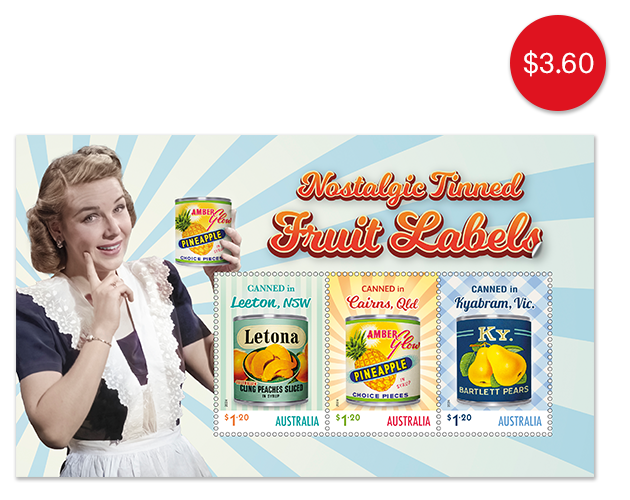
Stamp pack:
Nostalgic Tinned Fruit Labels Stamp Pack
This Nostalgic Tinned Fruit Labels stamp pack presents the gummed stamps and minisheet from the Nostalgic Tinned Fruit Labels stamp issue in a quality folder.

Maxicard set:
Nostalgic Tinned Fruit Labels Maxicard Set
This set of three maxicards is from the Nostalgic Tinned Fruit Labels stamp issue.
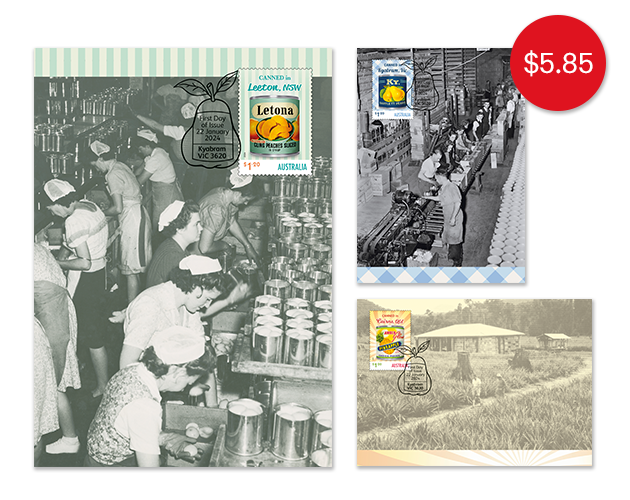
- Set of Gummed Stamps
- Minisheet
- Stamp pack
- Maxicard set
Additional collectables:
This content was produced at the time of the stamp issue release date and will not be updated.

